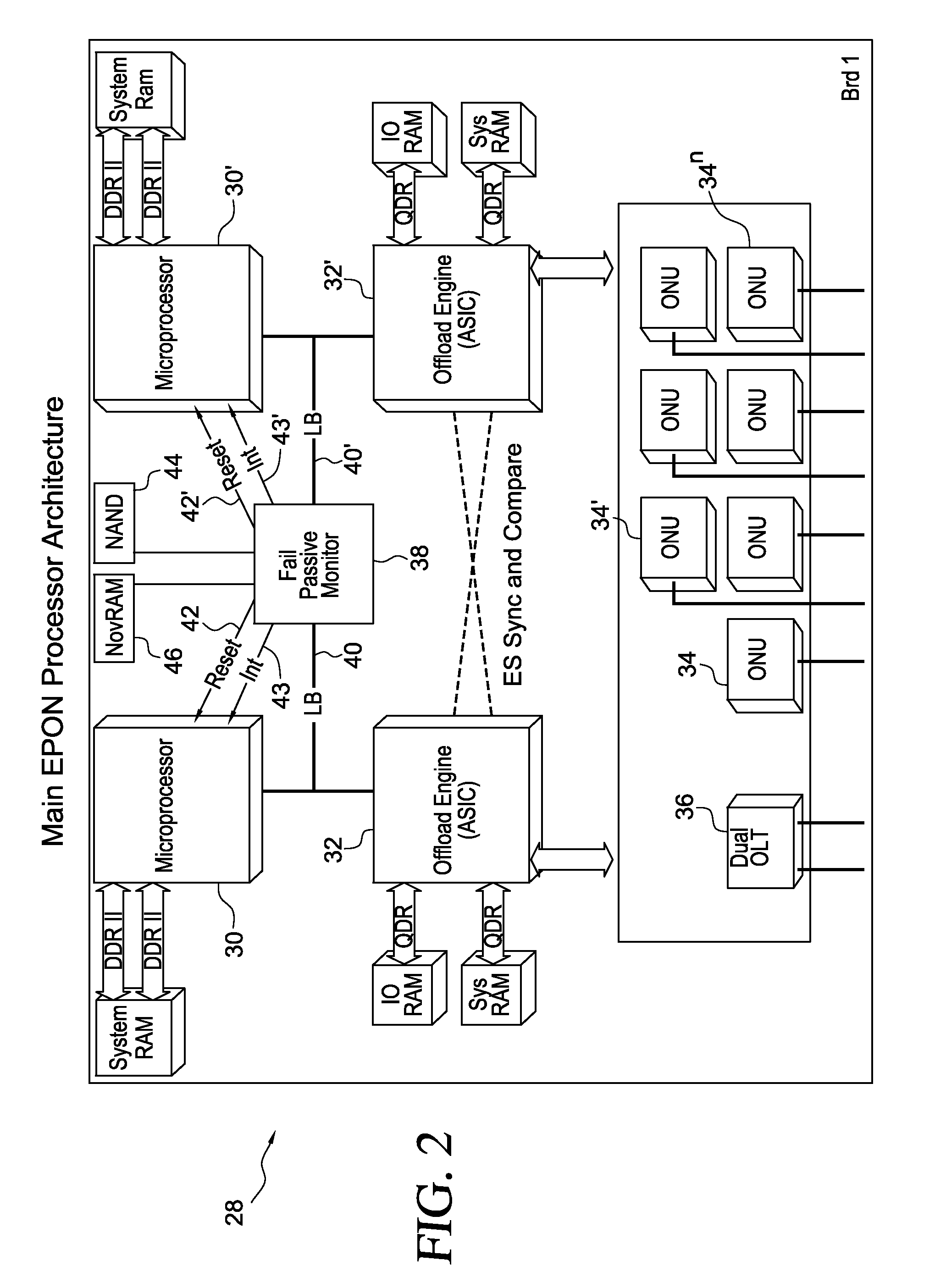Secondary core ONU to OLT via internal EPON bus coupled multi-core processor for integrated modular avionic system
a multi-core processor and integrated modular technology, applied in the field of avionics systems, can solve the problems of inability to certify the use of multi-core processors, inability to perform detail safety analysis of shared resources, and inability to achieve multi-core processors, so as to improve the processing capability of the ima system, improve communication availability, and reduce the weight of aircraft wires
- Summary
- Abstract
- Description
- Claims
- Application Information
AI Technical Summary
Benefits of technology
Problems solved by technology
Method used
Image
Examples
Embodiment Construction
[0027]Referring now to the drawings and the characters of reference marked thereon, FIG. 1 illustrates a first embodiment of the multi-core processor system of the present invention, designated generally as 10. The system 10 includes a main processor, designated generally as 12. The main processor 12 includes a processing unit 14. An offload engine 16 is operatively connected to the processing unit 14 for routing data to and from the processing unit 14. A plurality of main processor optical network units (ONU's) 18, 18′, . . . , 18n are operatively connected to the offload engine 16. A dual optical line terminal (OLT) 20 is operatively connected to the offload engine 16.
[0028]An internal EPON bus 22 is operatively connected to the OLT 20. Secondary core processors 24, 24′, . . . , 24n are located physically separate from the main processor 12. Generally, they are located on separate printed circuit boards. Each secondary core processor 24 has a respective secondary core processor ON...
PUM
 Login to View More
Login to View More Abstract
Description
Claims
Application Information
 Login to View More
Login to View More - R&D
- Intellectual Property
- Life Sciences
- Materials
- Tech Scout
- Unparalleled Data Quality
- Higher Quality Content
- 60% Fewer Hallucinations
Browse by: Latest US Patents, China's latest patents, Technical Efficacy Thesaurus, Application Domain, Technology Topic, Popular Technical Reports.
© 2025 PatSnap. All rights reserved.Legal|Privacy policy|Modern Slavery Act Transparency Statement|Sitemap|About US| Contact US: help@patsnap.com



